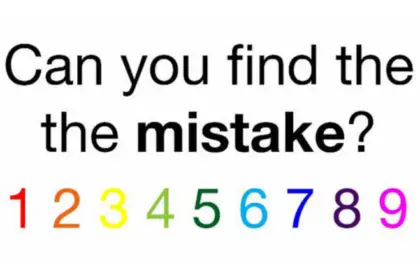Setting emotional and physical boundaries has become of utmost importance to maintain one’s peace of mind. In fact, if you are wondering how to tell if someone respects you, then see whether they respect your boundaries. But, the majority of people find it hard to set boundaries with their loved ones. The closeness in a relationship is important but having certain boundaries makes the relationship better and healthy for both parties.
In other cases, some people even find it difficult to understand what personal boundaries are. The reason behind it might be their subjective wants and needs.
This article describes specific points about personal boundaries and how to tell if someone respects you. Keep on reading ahead to learn about the topic in depth.
Understanding Personal Boundaries
We can define personal boundaries as the lines we draw for ourselves in terms of our comfort level around other people. Due to the increase in talks about mental health and personal boundaries across social media platforms, it is easy to find a lot of informative content on the topic.
People can set boundaries around the following:
Personal space
Emotional energy
Morals and ethics
Time
Sexuality
Social media
Materialistic possessions and finances
People can set boundaries with the following type of human relationships:
Friends
Coworkers
Romantic relationships
Strangers
Though these boundaries would not appear like a blatant wall or fence, healthy boundaries are communicating with others about what you’re comfortable with and what you won’t be tolerating. In simple words, setting boundaries empowers people to take charge of their lives.
Having said that, the answer to how to tell if someone respects you would be to see the level of acceptance the other person shows after you share your concerns around these aspects.
How to draw your personal boundaries
You need to communicate your needs clearly with the people involved in your life. It could be your family members, acquaintances etc. It helps others to understand your limitations to contain things and let you live in your own defined freedom.
For this, you can visualize your boundaries and write them down. It would help you get more clarity on where to draw lines between yourself and other people. You can ask the following questions yourself:
What is the reason for my unnecessary stress or discomfort?
What am I looking forward to every day Vs. What do I dread about it?
Which thing or who gives me energy?
What are the areas of my life that I feel exhausted by?
What makes me supported, feel safe, and valued?
You can draw a big circle on a blank piece of paper. Under the circle, you can write all things that make you feel stress-free and safe.
Some of the examples of these things would be:
An everyday routine
Positive affirmations from your beloved ones
Not taking work stress to their home or other personal space
Keeping a clear cut communication for your loved ones
Being able to decide how you want to spend your time when you’re relaxing
Saying no whenever needed
You can write down things that cause you pain, discomfort, emotional exhaustion, or annoyance on the outer portion of the circle. If “How to tell if someone respects” is your question, then know that these factors are the parameters to judge that decision.
Some of the examples of that you can consider would be:
Your parents are telling you what you must do with your life against your will
Working on projects long after the shift is over in place of prioritizing your me-time.
Worrying too much about what others think of you
Cousins or friends borrow money from you, and you don’t feel comfortable about it
Someone is always talking about their relationship issues
Your roommate is using your personal stuff without asking first
Your partner deciding who you should talk to and not
Uninvited physical touch by strangers
People asking about your personal life
How to tell if someone respects you?
The Rule of 3:
The rule of 3 is a technique to implement healthy boundaries in your life. And it also helps you know whether a person really respects you.
The technique was made famous by a TikTok user, Kelsey Laurier. In her video, she answered the question: “Can you give examples of the boundaries you set in friendships?” by one of her followers.
She suggested her curious followers follow Rule of 3. The rule suggests you tell your boundaries to the other person for the first time. And, if they still don’t completely abide by it, that’s okay. The first time you have to communicate the issue you are having with their actions clearly.
Next, tell them the issues with the same grace for the second time. Because if the other person holds a good relationship with you, then it is fair to give them a second chance just like you would have wanted for yourself.
But, in a situation where you have to tell them the same thing thrice, then it’s time to end things with the person. It clearly shows that they don’t care about your boundaries. Basically, it shows whether they respect your personal space and choices.
So when you cut off somebody from your life, they would know the exact reason. And won’t try to approach you again unless they actually change their behavior.
This method seems daunting, but it would be an important relief once you do it.
The rule of 3 technique is quite useful in a number of scenarios, but it won’t be applicable in some cases. For example, if a person known to you is stealing from you, trying to make advances on your spouse or romantic partner, gossiping about you or other such situations, there is no need to wait to end things. Also, in cases, you find your close one being physically or emotionally abusive to others or you, you need to cut connections with them right away.
Time and materialistic boundaries:
Time Boundaries:
If the Rule of 3 doesn’t seem to be your cup of tea, then alternatively, you can try time boundaries. In this technique, you would need to build a structured time frame that can let you have a more personal space.
You can decide a set time to meet others, for example, between 1 to 2 PM on Mondays. You can have these kinds of schedules calendared. It must connect with an automated call to notify you when you would need to head out of the meeting.
If the person you are spending time with respects your schedule once you communicate with them about it, they do respect you in a way.
While building time boundaries, be sure to avoid the following:
People-pleasing – You might be someone who is afraid to let people down. You might have said yes to others in so many instances when you already stretched the limit you did set while creating your time boundaries.
The fallacy in planning – The planning fallacy refers to a kind of cognitive bias leading us to underestimate how long something will take us to complete. In simple words, people have a natural tendency to assume they can finish all the tasks in a limited time.
This would need you to show a degree of self-awareness where you know if you could finish a certain amount of work or other stuff within a decided period. And be upfront with yourself if you cannot do the job in that time frame.
Thus, you can’t dodge the time boundaries you had set for yourself.
Busyness culture– It has been a human tendency to think productivity is similar to self-worth. There is always some kind of external and internal pressure to do more. This mentality hinders you from following your time boundaries and often will leave you exhausted and not in sync with your needs.
The Materialistic Boundaries:
You can start putting material boundaries as well. It involves putting boundaries on sharing your materialistic properties. For instance, if someone asks to use your laptop, then you can put a limit on how long they can use it. Also, mention how you would feel if they do not return the laptop in the given time.
With this method, you would let the person you are dealing with know how you would like your shared stuff to be treated. If they still do not seem to care about your materialistic boundaries, then they clearly don’t respect that.
Final Words on boundary setting and respect:
In summary, to set up personal boundaries, you need to know how certain things, work, or people you are involved with make you feel? Having a clear-cut idea of what works for you and what doesn’t is very important to maintain healthy boundaries with others. The top techniques to know whether someone respects you are The Rule of 3, setting time and materialistic boundaries. You might encounter many people who don’t understand what personal boundaries are. Thus, the best way to deal with such people is by communicating your needs and wants. Someone who does respect you wouldn’t cross the lines you already told them about.







